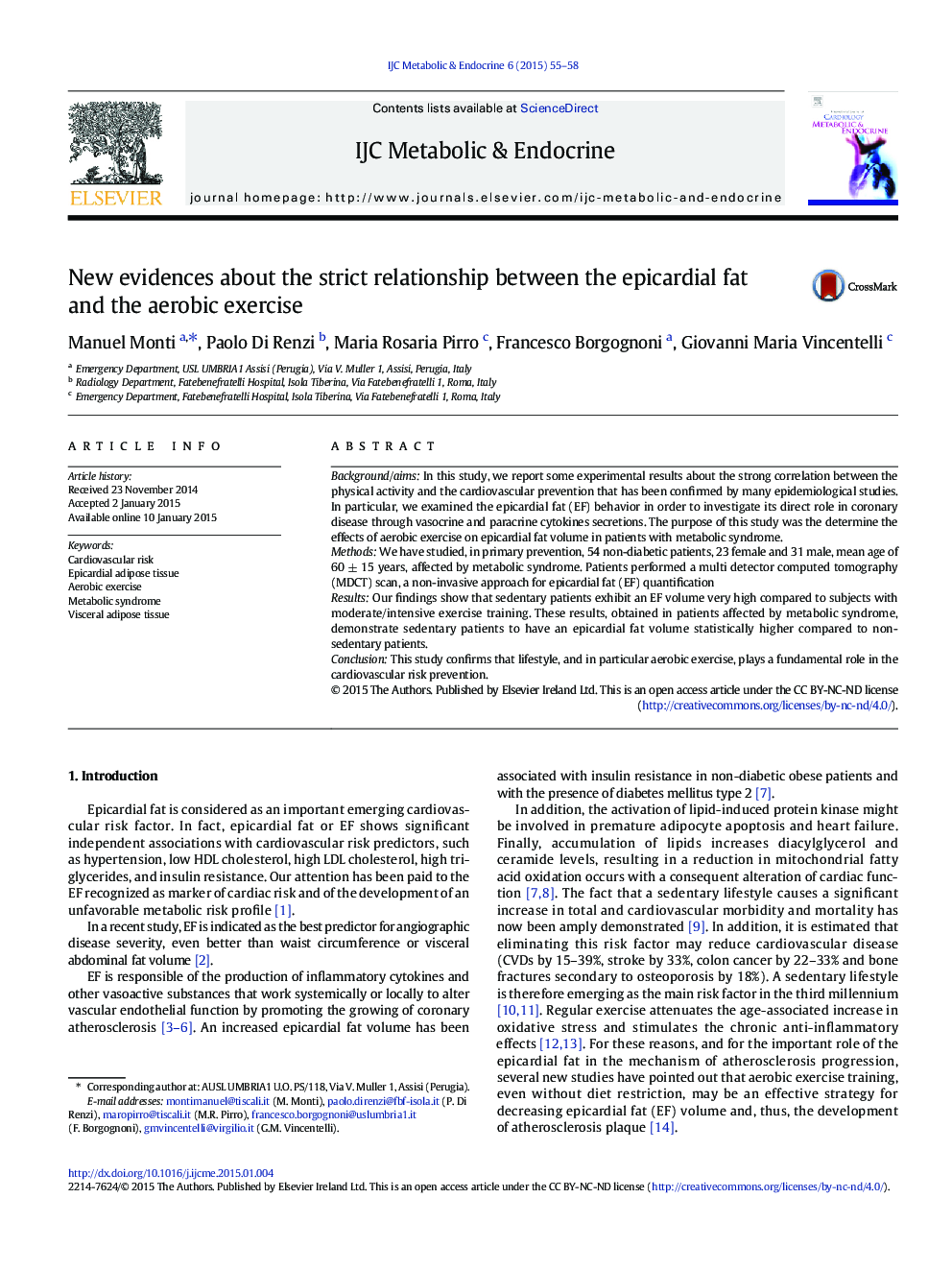| Article ID | Journal | Published Year | Pages | File Type |
|---|---|---|---|---|
| 2927212 | IJC Metabolic & Endocrine | 2015 | 4 Pages |
Background/aimsIn this study, we report some experimental results about the strong correlation between the physical activity and the cardiovascular prevention that has been confirmed by many epidemiological studies. In particular, we examined the epicardial fat (EF) behavior in order to investigate its direct role in coronary disease through vasocrine and paracrine cytokines secretions. The purpose of this study was the determine the effects of aerobic exercise on epicardial fat volume in patients with metabolic syndrome.MethodsWe have studied, in primary prevention, 54 non-diabetic patients, 23 female and 31 male, mean age of 60 ± 15 years, affected by metabolic syndrome. Patients performed a multi detector computed tomography (MDCT) scan, a non-invasive approach for epicardial fat (EF) quantificationResultsOur findings show that sedentary patients exhibit an EF volume very high compared to subjects with moderate/intensive exercise training. These results, obtained in patients affected by metabolic syndrome, demonstrate sedentary patients to have an epicardial fat volume statistically higher compared to non-sedentary patients.ConclusionThis study confirms that lifestyle, and in particular aerobic exercise, plays a fundamental role in the cardiovascular risk prevention.
